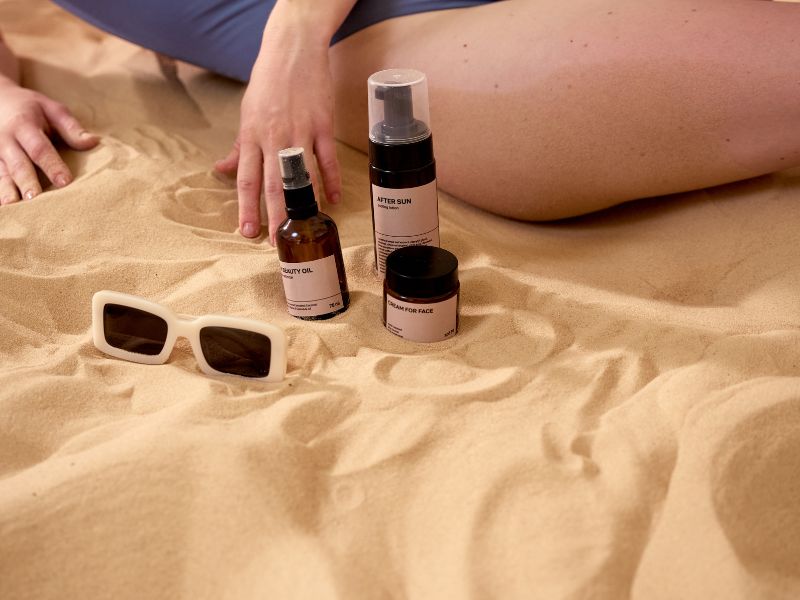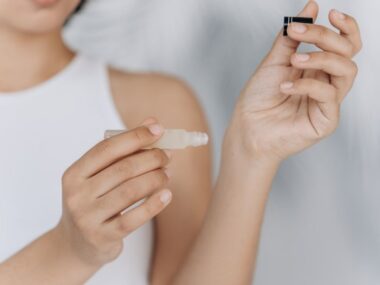Sunscreen has emerged as an essential part of daily skin care, now acknowledged by dermatologists and skincare enthusiasts. Its benefits in protecting against sunburn, premature ageing, and, more critically, skin cancer, have made it a must-have product in any skincare routine. However, while people increasingly use sunscreen, questions about its removal linger. One of the most frequently asked is: Do you need to wash off sunscreen?
To answer this question comprehensively, it’s essential to understand sunscreen, how it works, the different types available, the potential effects of leaving it on, and recommended aftercare routines. This article explores these topics to help you make informed decisions about sunscreen use and removal for healthy, well-cared-for skin.
Understanding Sunscreen and Its Mechanism
Sunscreens are formulations designed to protect the skin from the harmful effects of ultraviolet (UV) radiation from the sun. They generally fall into two main categories: chemical sunscreens and physical (or mineral) sunscreens, each of which interacts with the skin in distinct ways.
- Chemical Sunscreens: These contain active ingredients like avobenzone, octinoxate, and oxybenzone, which penetrate the skin and absorb UV rays, converting them into heat that is then released from the body. Because of their ability to absorb into the skin, these sunscreens often have a lightweight, transparent finish.
- Physical Sunscreens: Also known as mineral sunscreens, these contain zinc oxide or titanium dioxide, which sits on the skin’s surface and reflects UV radiation away from the skin. Physical sunscreens are often preferred for sensitive skin as they do not penetrate the skin barrier and are less likely to irritate.
The effectiveness and wearability of sunscreens have improved significantly over the years. However, the differences in how these sunscreens interact with the skin raise important questions about their aftercare and removal.
Why Washing Off Sunscreen is Important
Whether or not to wash off sunscreen largely depends on several factors, including the type of sunscreen used, the nature of your skin, and your skin’s unique needs. Leaving sunscreen on the skin, especially chemical formulations can have unintended effects if not washed off at the end of the day.
- Residue Build-Up and Skin Congestion: Sunscreens, particularly those designed for water resistance, tend to adhere strongly to the skin. Over time, this can lead to a build-up of product on the skin’s surface, which can clog pores and contribute to skin congestion, blackheads, and acne. Mineral sunscreens, due to their physical nature, can also accumulate and leave a film on the skin if not adequately removed.
- Chemical Interaction with Other Products: Many chemical sunscreens interact with the skin and absorb into the dermis, which means they can be harder to wash off than mineral sunscreens. When not properly removed, they may linger and react with other products in your skincare routine, potentially irritating, especially for sensitive or reactive skin types.
- Nighttime Skin Regeneration: Removing sunscreen allows your skin to undergo its natural nightly regeneration process unimpeded. The skin works to renew and repair itself overnight, and leaving sunscreen on could hinder this process by creating a barrier that blocks the skin from fully absorbing any nighttime products designed to support skin repair and hydration.
Methods for Effective Sunscreen Removal
To ensure thorough removal of sunscreen, especially waterproof or long-wear formulas, a simple water rinse is insufficient. Here are some recommended techniques to effectively cleanse your skin and prevent any adverse effects from sunscreen residue.
- Double Cleansing Method: Popular in Korean skincare routines, double cleansing involves using an oil-based cleanser followed by a water-based cleanser. The oil-based cleanser works to break down sunscreen, makeup, and other oil-based impurities on the skin, which are then washed away with the water-based cleanser. This method is especially effective for removing chemical sunscreens and water-resistant formulas.
- Micellar Water and Cleansing Balms: Micellar water contains tiny oil molecules suspended in water, which can attract and remove sunscreen without leaving a residue. Cleansing balms are another excellent choice, as their emollient properties help to dissolve even the most stubborn sunscreens, making them ideal for both chemical and mineral sunscreens. For people with sensitive skin, these methods offer a gentle but effective alternative.
- Avoiding Over-Cleansing: While it’s important to remove sunscreen, it’s equally critical not to over-cleanse, as excessive washing can strip the skin of its natural oils. Gentle but thorough cleansing is the key. Using lukewarm water and massaging the cleanser gently into the skin ensures all sunscreen residues are removed without disrupting the skin’s natural barrier.
Effects of Not Washing Off Sunscreen
Leaving sunscreen on overnight or failing to remove it adequately may lead to several skin concerns, especially if repeated over time. Understanding these potential effects can highlight the importance of proper sunscreen removal.
- Blocked Pores and Acne: Sunscreen, especially chemical-based and waterproof varieties, can clog pores if left on the skin. This can lead to comedones (blackheads and whiteheads) and inflammatory acne, as the accumulation of products and impurities blocks the natural flow of sebum.
- Irritation and Sensitivity: For individuals with sensitive or acne-prone skin, residual sunscreen can contribute to irritation. Certain chemical filters used in sunscreen can potentially trigger inflammation or sensitivity reactions if left on the skin for prolonged periods, as their interaction with skin layers can stimulate a response in sensitive individuals.
- Compromised Skin Barrier: Physical sunscreens contain minerals that sit on the skin’s surface, and over time, an accumulation of these minerals can create a rough or dry texture on the skin. Proper cleansing prevents this layer from hardening on the skin’s surface and helps maintain the integrity of the skin barrier.
Balancing Sunscreen Use and Skin Health
The importance of sunscreen for skin health cannot be overstated. Yet, balance is key, and understanding how to incorporate sunscreen removal into your routine without harming your skin is essential. Here are some best practices for incorporating sunscreen into your skincare regimen effectively:
- Daily Use of Gentle Cleansers: Opt for cleansers that suit your skin type and contain gentle surfactants rather than harsh detergents, which can strip the skin. Look for sulfate-free formulas and those with soothing ingredients, like chamomile or aloe vera, to support the skin barrier while still effectively cleansing.
- Choosing the Right Sunscreen Formula: If you have acne-prone or sensitive skin, choosing a sunscreen labelled “non-comedogenic” or specifically designed for sensitive skin can reduce the likelihood of clogged pores or irritation. Additionally, if you prefer a lighter cleansing routine, water-based or gel sunscreens might be more manageable to remove than thick, creamy formulations.
- Cleansing Frequency: For individuals who reapply sunscreen throughout the day (especially in outdoor settings), it may be necessary to use a gentle cleansing wipe or micellar water midway through the day to prevent excessive product build-up before reapplying. This practice helps keep pores clear and maintains a fresh layer of protection.
Nighttime Routine and Skin Repair
Beyond sunscreen removal, an effective nighttime skincare routine can help maintain skin health and counter any potential irritation from daily sunscreen use. After thoroughly cleansing, the skin is primed to absorb products designed for hydration, repair, and rejuvenation.
- Toning and Balancing: After cleansing, use a gentle, alcohol-free toner to restore the skin’s natural pH and provide a base for serums or treatments. Hydrating toners with ingredients like hyaluronic acid, rose water, or niacinamide are ideal for maintaining skin suppleness.
- Moisturizing and Repairing: Sunscreen and daily exposure can dehydrate the skin, making a nightly moisturizer essential. Look for moisturizers with ceramides, peptides, or antioxidants like vitamin C, which help repair the skin barrier and reduce any irritation caused by daily sunscreen wear.
- Exfoliating Weekly: A gentle weekly exfoliation can help remove any residual sunscreen build-up and dead skin cells, leaving the skin smooth and clear. However, be cautious not to over-exfoliate, especially if your sunscreen is part of a multi-step skincare regimen that includes potent ingredients like retinoids or acids, as this can lead to sensitivity.
Conclusion
Incorporating sunscreen into your daily skincare routine is crucial for protecting against sun damage, skin ageing, and cancer. However, it’s equally important to consider the role of sunscreen aftercare. Leaving sunscreen on the skin, especially overnight, can cause unwanted effects such as clogged pores, irritation, and a compromised skin barrier. By implementing a balanced approach to cleansing and using gentle, effective products for sunscreen removal, you can enjoy the full protective benefits of sunscreen without compromising skin health.
The key is a mindful routine that prioritizes effective cleansing without over-washing, ensuring that your skin remains clear, comfortable, and resilient. Sunscreen is indispensable for long-term skin health, but its benefits are best realized when coupled with diligent aftercare practices that allow your skin to breathe, renew, and stay at its healthiest.






